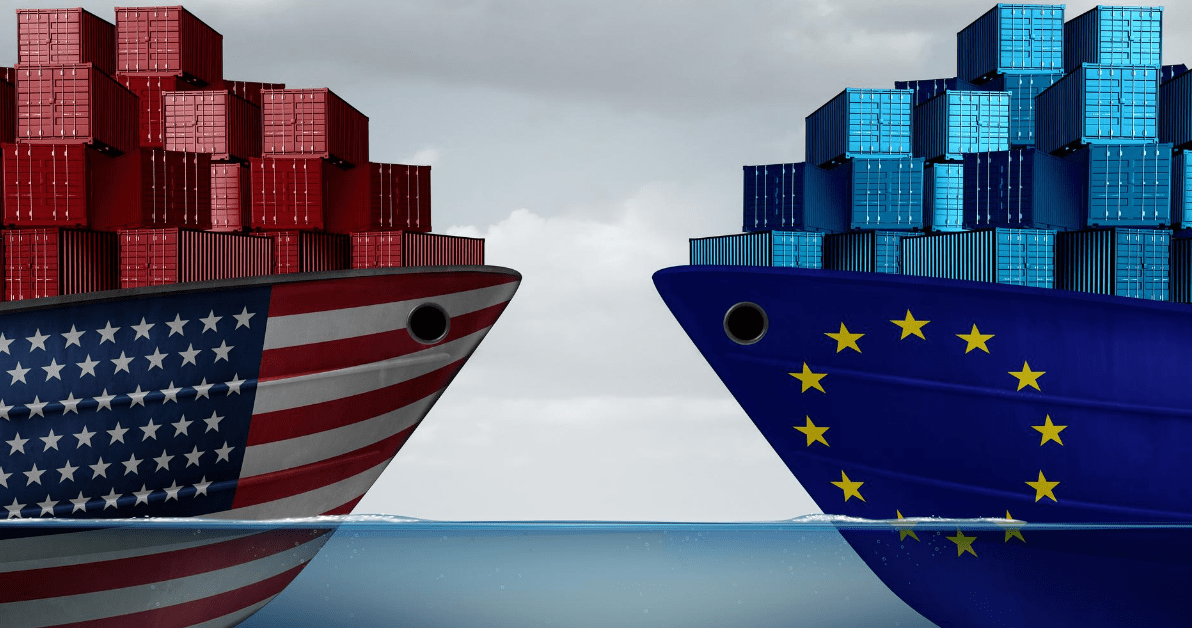Tariffs: Caught in the Trade War Crossfire
The bike industry—and IBDs, in particular—could be collateral damage under Trump’s proposed tariffs
Words by Bob Margevicius
Another day, another tariff, it seems. It’s been months since the Trump administration first slapped tariffs on Chinese-made solar panels and washing machines imported to the United States, a punishment with the stated goal of curbing that nation’s intellectual property theft from U.S. companies. When he followed that up in March with a 25% tariff on steel imports, and a 10% tariff on aluminum—Canada, Mexico, and the EU were exempted until June 1—it set off a global tit-for-tat trade dispute that’s since escalated to include up to $500 billion of Chinese goods and resulted in retaliatory tariffs from several other key trading partners, including Canada, Mexico, and the EU.
As you’re no doubt aware, several rounds of these tariffs—some of which have been approved and/or enacted, and others that are still being debated—will affect the bike industry, but the scope and degree of impact differs widely from one tariff to the next. This is intended as a primer on where these tariffs stand today, what their impact is likely to be, and what you can do to help combat them.
Steel and Aluminum—Announced on March 1 and enacted only weeks later, these tariffs place a 25% tariff on worldwide steel imports and a 10% tariff on aluminum. China was the primary target from the beginning, but exemptions ran out for Canada, Mexico, and the EU on June 1. While these will have an impact on the bike industry—custom bike builders, and component makers like Wheels Manufacturing and DT Swiss, buy raw aluminum or steel tubing and spokes from China—it will likely be limited to that small portion of the market. In late July, Trump and European Commission President Jean-Claude Juncker discussed a potential deal to reduce, or even eliminate, tariffs between the two economies, but nothing has been formally agreed to.
E-Bikes and E-Bike Motors—On June 20, a list of $16 billion worth of additional goods, including electric bicycles and electric bicycle motors, was announced that would be subject to a 25 percent tariff increase. That proposal was finalized on August 7, and the tariffs will go into effect this Thursday, August 23. Of course, this impacts one of our industry’s most promising and high-growth product lines. Sales of e-bikes exceeded $77 million last year, nearly double those of 2016.
While some have suggested the price on the average Chinese e-bike could rise as much as 75 percent, based on margins for importers and retailers—a potentially crippling scenario for the exploding e-bike market—I don’t expect these will hit specialty retailers too hard. It’s true that the majority of e-bikes sold in the U.S. are imported from China, but these ones are, for the most part, share e-bikes, throttle-activated e-bikes or relatively low-value bikes that aren’t being sold by IBDs. Most high-value brands that are carried by IBDs import from Taiwan or Europe, and will see no impact.
Bikes, Parts, and Accessories—On July 11, the U.S. Trade Representative (USTR) proposed a 10 percent tariff increase on $200 billion worth of Chinese goods that included virtually all bicycle products—most bicycles, parts, components, accessories (helmets, lights, tools, computers, trailers) and, most importantly, all complete bicycles—produced there. Less than a month later, it was announced that the tariff could be increased to 25 percent rather than 10 percent, and that’s the current proposal.
Obviously, this is a sweeping tariff that would broadly impact—and damage—our industry, which is heavily reliant on Chinese manufacturing. Let’s break it down by category:
Complete Bicycles (8712.xx)
- Approximately 93% of complete bikes, or about 15 million, are imported into the U.S. from China each year, at an estimated value of $1.1 billion. Fewer than 500,000 bicycles are assembled domestically in the U.S..
- Shifting to another country, or manufacturing in the U.S., requires time, economies of scale and significant capital investment.
- Even a partial shift to another country would take years to implement. That’s because any one bicycle, similar to an auto, has more than 200 unique components, and China is the major manufacturing cluster and the source for the majority of that content.
- Reshoring, and building economies of scale, in the U.S. would also require favorable free trade agreements to stimulate export sales.
Bicycle Components (8714.xx, 4011.50, 4012.xx, 4013.xx)
- Over $300 million of bicycle components—including tires, tubes, seats, handlebars etc.—are imported from China, representing about 60% of the total bicycle component imports. All are essential for the assembly, repair and maintenance for the over 100 million bicycles currently in use in the U.S.
- There is no significant domestic production of components; the remaining 40% are high-value, performance-oriented components from places like Japan and Europe.
Bicycle Safety Accessories (6506.10, 8512.xx)
- The majority of important bicycle safety accessories like helmets, lights, baby trailers—worth about $100 million—are from China. They serve to protect cyclists from unforeseen situations including, today, aggressive and distracted drivers.
- Again, there is no domestic production of bicycle safety accessories to scale, Supply sources from other countries also provide high-value, performance-oriented components.
What does all of this mean to retailers and, further, to the industry?
The proposed 25 percent tariff on these three categories—bicycles, bicycle components, and bicycle safety accessories—will have catastrophic consequences for the U.S. bicycle market. This industry supports thousands of jobs at companies like ours at Specialized and, of course, the thousands of small, independent retail bicycle shops you operate that sell, repair, maintain, and service bicycles.
Short Term
- Bicycles, bicycle parts, and bicycle accessories from China could be subject to an additional 25% tariff (tax). It will affect about 90% of all bicycles and 40% of all parts and accessories.
- Your cost on China-produced bicycles, bicycle parts, and accessories will increase commensurate with these cost increases.
- Retail prices will increase by 25-plus percent.
- It could also influence bicycle and accessory sales, as well as repair and service costs.
Long term
- Higher costs will likely result in a decline in purchases and participation. The greatest impact will be on the mass-market brands, who rely heavily on China as their manufacturing source.
- Currently, more than 97% of all children’s bicycles (under 24”) and 94% of all MTB bicycles are imported from China.
- It could take a decade or more to either reshore to the USA, or transition to a third country.
- Retail prices could be impacted for many years to come.
In the end, I’m uncertain of the overall impact on retail and IBDs, but it could lead to as much as a 15% sales decline, which would likely cause many retailers to go bankrupt and close down. It’s likely, in this case, that many people will find substitute products, and forgo buying bicycles for their children or grandchildren, which could hurt future participation.
In short, the overwhelming majority of bicycles, bicycle parts and bicycle safety components imported into the United States come from China. The operations in China have economies of scale and produce them not just for the U.S. market, but for the world. If this 25% retaliatory tariff on China imports is approved, it would be destructive to bicycling and everything associated with it.
On Monday, I testified to all of this before the Section 301 Committee in Washington, DC. As its Executive Vice President, I was there on behalf of Specialized Bicycle Components, sure. But, more importantly, I was there on behalf of the entire bike industry. Now, more than ever before, we need to unite as an industry to combat these destructive tariffs.
What can you do?
- Engage your community NOW (a decision is expected on the tariff in mid-September) to contact your congressman and legislators to resist tariff increases. It will cost jobs, businesses, and our livelihoods.
- Use this link, and format to voice your position: https://peopleforbikes.org/oppose-bike-tariffs-retailers/
Robert “Bob” Margevicius is Executive Vice President of Specialized Bicycle Components, where he leads the company’s Asian operations, as well as strategic planning, product sourcing, product development, and supplier relations. A former pro cyclist whose bike industry career spans back to 1979, he’s seen plenty of disruption to date but is confident we’ll come out fine.
 The NBDA has been here since 1946, representing and empowering specialty bicycle dealers in the United States through education, communications, research, advocacy, member discount programs, and promotional opportunities. As shops are facing never-before-seen circumstances, these resources offer a lifeline. Together, we will weather this. We at the NBDA will not waver in our commitment to serving our members even during this challenging time—but we need your support.
The NBDA has been here since 1946, representing and empowering specialty bicycle dealers in the United States through education, communications, research, advocacy, member discount programs, and promotional opportunities. As shops are facing never-before-seen circumstances, these resources offer a lifeline. Together, we will weather this. We at the NBDA will not waver in our commitment to serving our members even during this challenging time—but we need your support.
Now is the time to become a member as we join together to make one another stronger. Whether you’re a retailer or an industry partner, your membership in the NBDA is one of the best investments you’ll make this year.
Learn more about the benefits of being a member and join now.









